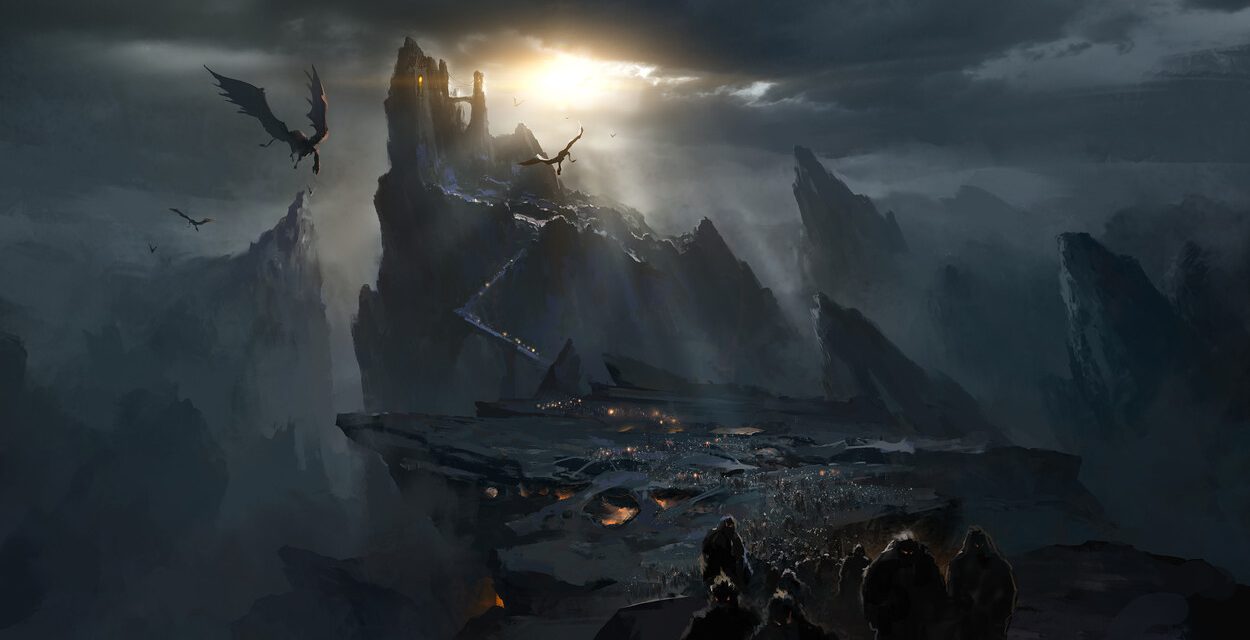Since its commercial appearance, artificial intelligence has taken the world and countless industries by storm, and video game development is no exception, in their design and especially where random generation comes into play.
Even though random generation is not a new invention and has been present for some time, in both huge AAA titles and indie games, AI now allows for easier randomized maps, items, and experiences each time the game is played, increasing the replayability and keeping it alive for much longer thanks to completely random and unique encounters on each run.
So, let’s look at how AI could be implemented in modern games to generate maps, numbers, and countless elements, as well as its benefits and limitations.
AI in Map Generation
As most gamers know, Minecraft uses an algorithm that generates infinite landscapes so that no two players ever have the same world, and this is a feature that predates what we call AI today.
Now, AI can create maps of any desired size, from small, dungeon-like environments to large, open-world settings. This could potentially be applied to RPGs, where the AI generates very different dungeon segments, each with its own layout and challenges that would steer the player and make them change their style of play.
In smaller-scale games, AI can generate compact maps that adapt to the player’s progression. For instance, in a roguelike game, AI might create a new map layout based on the player’s previous actions, such as their tendency to loot certain items or avoid specific enemies.
This adaptivity is what could keep the game exciting and unpredictable.
In RPGs
In RPGs, AI could be used to generate random numbers related to character stats, item properties, or enemy strength, quite like dice rolls found in tabletop games such as Dungeons & Dragons and that has kept it unique and relevant.
This randomization can add depth to the game since players must be able to adapt their strategies based on the different conditions in every playthrough.
AI could also improve storytelling by using dynamic narratives based on the player’s choices. This would create a much more personalized experience in which the story evolves as a result of the player’s actions and decisions.
In addition to the main story, AI could generate random side events or quests, thereby adjusting the game to the player’s actions and decisions. For example, if a player focuses on looting, the AI may create areas filled with more treasure or quests that reward exploration and offer items appropriate for their playstyle.
There are, however, gaming experiences tailored to each player individually, while the randomness is guaranteed by AI, and those are online casinos, like Sweepstakes casinos, that offer unique promotions for the new and the regular customers alike.
Adjusting to Player Behavior
Perhaps the most promising aspect of AI in game development has to do with its ability to adapt to player behavior.
Through analysis of how players interact with the game world, such as whether they prefer combat, exploration, or looting, AI can adjust the difficulty level, generate new challenges, or create personalized content.
For example, if a player enjoys collecting items, the AI can generate more collectibles or hidden areas. If a player enjoys combat, the AI can increase the frequency or difficulty of enemy encounters, and the same goes if the AI detects the player is struggling with certain segments or they keep spamming the same attack over and over.
Benefits of AI for Developers:
Considering AI can benefit gamers as the customers of a finished product, could it also offer any shortcuts to those making it. There are some advantages of using AI in game development:
-
1. More Replay Value: AI-generated content makes every playthrough unique, thus giving players a reason to play the game many times over.
-
2. Less Development Time: AI automates tasks such as map creation and item generation, freeing the developers of some of the tasks they would do manually otherwise.
-
3. More Immersive Gameplay: Dynamic environments and adaptive challenges make the game world feel more alive and responsive to the player’s actions.
Shortcomings and Challenges
While AI offers many benefits for random generation, there are also challenges to consider.
One of the main issues is the potential for AI-generated content to feel repetitive or unpolished.
Unlike human-designed levels, AI-generated maps might lack the nuanced balance and detail a human designer would provide since they can imagine themselves as a player and test the game.
Another challenge is ensuring that AI-generated content aligns with the game’s overall narrative and design. For instance, if an AI generates a map that contradicts the game’s storyline or setting, it can disrupt the player’s immersion and give off an unpolished or unfinished feel.
Future Developments
The integration of AI with procedural generation will potentially push the boundaries and standard practices in video game development.
We can expect to see more sophisticated game worlds and mechanics as AI technology advances. The ability to generate entire games from scratch, as demonstrated by projects like Google’s Doom AI Engine, suggests a future where games are tailored to individual players but at the cost of a shared player experience.
In conclusion, AI’s ability to create unique maps, characters, and game elements enhances replayability, and player engagement can be both a benefactor and detractor, a double-edged sword.
The potential for AI to improve games is vast; however, it should not be used as simply a shortcut for tasks seen as chores during development since personality and human touch can’t be replaced in gaming.









![[Leak] PS5 and PS5 Pro will have discounts of up to €150 this Black Friday](https://vgleaks.com/wp-content/uploads/2025/11/ps5_ps5_pro-150x150.webp)



